- Home
- Accommodation
- Activities
- Area Info
- Maps
- Photo Galleries
- Real Estate
- Travel
Ocean Wildlife Guide
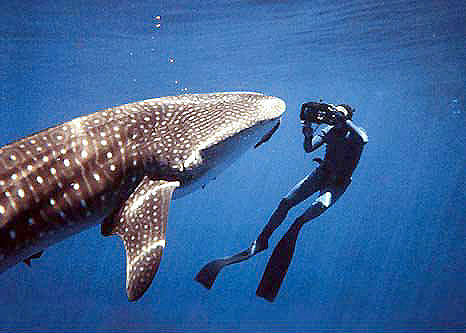 Since we humans live on land, many of us have no idea what an incredibly abundance of creatures live in our oceans.
Since we humans live on land, many of us have no idea what an incredibly abundance of creatures live in our oceans.
One can walk half a day in Cabo Blanco National Reserve and barely see a single living creature other than a bird or two and a squirrel. Yet, put on a snorkel mask and dive into the ocean anywhere in the Montezuma area, and you’re going to see a fish within twenty seconds. And if you know where to look, you’ll see thousands of them… dozens of species. The abundance of wildlife on land pales in comparison to what lives in the ocean. This is because of two reasons. First, ocean animals live in a three-dimensional world, creating a much larger volume of space for them to exist. And second, life evolved first in the season, so has had a billion years or more time to adapt to every possible ecological niche.
Thousands of species live in our oceans near to Montezuma and Santa Teresa, and we can’t write about them all. But we’ve tried to cover the basic animals you may see, or hope to see in this area. My apologies to all the other creatures who don’t get an article.
Various Sea Life:
- Malpais Tidepool Life – A Rainbow World
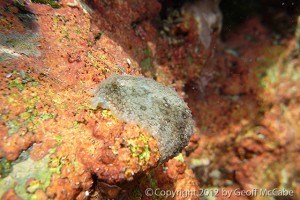 A colorful miniature world lives secretly in Malpais, within the tidepools of Mar Azul. Here, a couple dozen tidepools of various sizes offer an incredible array of colorful life, each different than the next. One can’t help but wonder why there’s such diversity from pool to pool, when they’re all very near to each other, ...
A colorful miniature world lives secretly in Malpais, within the tidepools of Mar Azul. Here, a couple dozen tidepools of various sizes offer an incredible array of colorful life, each different than the next. One can’t help but wonder why there’s such diversity from pool to pool, when they’re all very near to each other, ... - Orca Whales
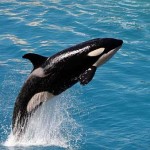 Orca whales live in the waters on the Pacific coast of Costa Rica, and are occasionally seen near Montezuma. Offering a wide range of activities in a sublime ambience, Montezuma has become a booming hot spot for aquatic and land sports, wildlife viewing, leisurely retreats and a lot more. Scuba diving and snorkeling are enjoyed ...
Orca whales live in the waters on the Pacific coast of Costa Rica, and are occasionally seen near Montezuma. Offering a wide range of activities in a sublime ambience, Montezuma has become a booming hot spot for aquatic and land sports, wildlife viewing, leisurely retreats and a lot more. Scuba diving and snorkeling are enjoyed ... - Nudibranchs – One of the World’s Most Amazing Creatures
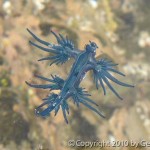 Costa Rica and Montezuma are known for the big fish in their waters. Whitetip sharks, manta rays, different species of whales and much more are all found in the diving spots here. However, one shouldn’t overlook the smaller guys out there. Diving across the pacific coast of Costa Rica can be an amazing experience for ...
Costa Rica and Montezuma are known for the big fish in their waters. Whitetip sharks, manta rays, different species of whales and much more are all found in the diving spots here. However, one shouldn’t overlook the smaller guys out there. Diving across the pacific coast of Costa Rica can be an amazing experience for ... - Whale Watching
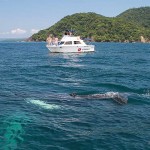 Many people ask me about whales… where are they, how can we see them, what time of year, etc? Costa Rica is famous for whales, and there are many species that come here seasonally, to have their babies in its protected bays and coves. Humpback Whales The most common type of whale that you may see ...
Many people ask me about whales… where are they, how can we see them, what time of year, etc? Costa Rica is famous for whales, and there are many species that come here seasonally, to have their babies in its protected bays and coves. Humpback Whales The most common type of whale that you may see ... - Dolphins – Seen all Year in Montezuma
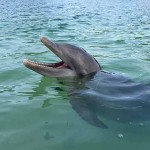 While you may see dolphins at any time of year in Montezuma, they’re actually pretty rare to see from the town or beaches. Sometimes you’ll see a group of them swimming past, but you’re most likely to spot them from one of the boat tours, such as a sport-fishing trip, a journey to Tortuga ...
While you may see dolphins at any time of year in Montezuma, they’re actually pretty rare to see from the town or beaches. Sometimes you’ll see a group of them swimming past, but you’re most likely to spot them from one of the boat tours, such as a sport-fishing trip, a journey to Tortuga ...
Dolphins:
- Bottlenose Dolphins in Montezuma
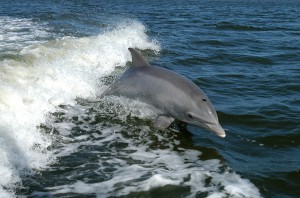 The bottlenose dolphin found in Montezuma belongs to the order of Cetacea and the originating family is called Delphinidae. The dolphins are available almost the entire year for the pleasure of the tourists. Their bodies range in length from 2 – 4 m. Research has proved that the males are larger and heavier in body ...
The bottlenose dolphin found in Montezuma belongs to the order of Cetacea and the originating family is called Delphinidae. The dolphins are available almost the entire year for the pleasure of the tourists. Their bodies range in length from 2 – 4 m. Research has proved that the males are larger and heavier in body ... - Dolphins – Seen all Year in Montezuma
 While you may see dolphins at any time of year in Montezuma, they’re actually pretty rare to see from the town or beaches. Sometimes you’ll see a group of them swimming past, but you’re most likely to spot them from one of the boat tours, such as a sport-fishing trip, a journey to Tortuga ...
While you may see dolphins at any time of year in Montezuma, they’re actually pretty rare to see from the town or beaches. Sometimes you’ll see a group of them swimming past, but you’re most likely to spot them from one of the boat tours, such as a sport-fishing trip, a journey to Tortuga ...
Eels:
- Spotted Moray Eels
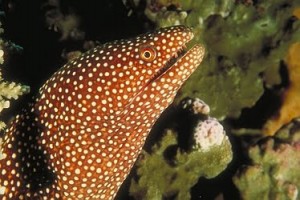 Gymnothorax Moringa or Spotted moray eels are a kind Moray Eels which have a medium to large size. They have a long snake-like body which is smooth and muscular. It is clothed with a leathery skin of white and yellow colors punctuated with dark browns spots. The average height of an adult spotted moray eel is ...
Gymnothorax Moringa or Spotted moray eels are a kind Moray Eels which have a medium to large size. They have a long snake-like body which is smooth and muscular. It is clothed with a leathery skin of white and yellow colors punctuated with dark browns spots. The average height of an adult spotted moray eel is ...
Fish:
- Cortez Angelfish
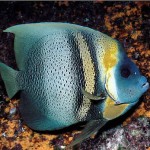 Cortez angelfish in Montezuma and Tortuga Islands are considered one of the most beautiful fish in the sea. Their bodies are smooth and curved in shape with fluid grace in their every movement. Bright and bold colors and stripes cross their bodies which make onlookers marvel at the sheer beauty. These fish are beautiful to ...
Cortez angelfish in Montezuma and Tortuga Islands are considered one of the most beautiful fish in the sea. Their bodies are smooth and curved in shape with fluid grace in their every movement. Bright and bold colors and stripes cross their bodies which make onlookers marvel at the sheer beauty. These fish are beautiful to ... - Sardine Schools in Montezuma
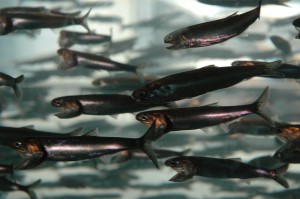 Many schools of sardines are present in the waters of the Montezuma beaches and Tortuga Islands. Sardines are small fish with high oil content, usually bright silver in color. On an individual basis, they move with efficient speed and fluidity which makes them very hard to catch by the dangerous predators of the ocean. Sardines ...
Many schools of sardines are present in the waters of the Montezuma beaches and Tortuga Islands. Sardines are small fish with high oil content, usually bright silver in color. On an individual basis, they move with efficient speed and fluidity which makes them very hard to catch by the dangerous predators of the ocean. Sardines ... - Blue Spotted Jacks, Montezuma
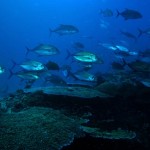 The blue-spotted jack in the waters of Montezuma is considered a predator to be wary of, despite its moderate size. The fish is considered one of the marine fish of the family of Cardingae. When the blue spotted jack reaches one year of age, it is supposed to have reached sexual maturity. Spring is the ...
The blue-spotted jack in the waters of Montezuma is considered a predator to be wary of, despite its moderate size. The fish is considered one of the marine fish of the family of Cardingae. When the blue spotted jack reaches one year of age, it is supposed to have reached sexual maturity. Spring is the ... - Snappers (Pargo)
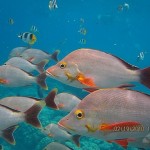 The snapper, known as “Pargo” in Costa Rica, is a common fish, found on both coasts and in all the areas where people would likely scuba dive. The Snapper gets its name from the large canine teeth, set in its upper jaws. These prominent teeth are visible even when the jaws are shut, much ...
The snapper, known as “Pargo” in Costa Rica, is a common fish, found on both coasts and in all the areas where people would likely scuba dive. The Snapper gets its name from the large canine teeth, set in its upper jaws. These prominent teeth are visible even when the jaws are shut, much ... - Puffer Fish
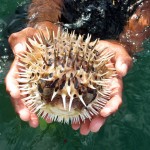 Puffer fish in the Montezuma area are also called ‘blowfish’. They get this name because of their ability to ‘puff’ or ‘blow up’ their bodies to a medium sized football which is covered in thin sharp spines. Scientists have offered an explanation for the puffer fish’s many natural defenses. According to research, it is believed ...
Puffer fish in the Montezuma area are also called ‘blowfish’. They get this name because of their ability to ‘puff’ or ‘blow up’ their bodies to a medium sized football which is covered in thin sharp spines. Scientists have offered an explanation for the puffer fish’s many natural defenses. According to research, it is believed ... - Observing Scorpion Fish in Montezuma
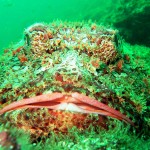 Montezuma and Tortuga Islands are known to host schools of scorpion fish. Scorpion fish belong to the genus Scorpaenidae. Scorpion fish live at the absolute bottom of the ocean, with a depth of almost 7000 feet. They rarely come up towards the upper side of the ocean. There are some subtypes of scorpion fish however ...
Montezuma and Tortuga Islands are known to host schools of scorpion fish. Scorpion fish belong to the genus Scorpaenidae. Scorpion fish live at the absolute bottom of the ocean, with a depth of almost 7000 feet. They rarely come up towards the upper side of the ocean. There are some subtypes of scorpion fish however ...
Sea Turtles:
- Baby turtles
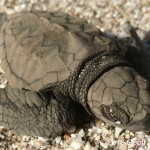 Yesterday we were very fortunate to come across a nest of baby turtles hatching and scampering down to the sea. The tourists gathered around and protected them from birds and dogs, and helped a bit when they got stuck. You aren’t supposed to help them too much… they need to stretch out their muscles to ...
Yesterday we were very fortunate to come across a nest of baby turtles hatching and scampering down to the sea. The tourists gathered around and protected them from birds and dogs, and helped a bit when they got stuck. You aren’t supposed to help them too much… they need to stretch out their muscles to ... - Caletas-Arío National Wildlife Refuge
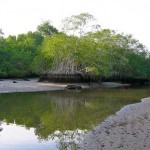 Inscribed relatively recently (in 2006), the Caletas Ario wildlife Refuge (CANWR) has 313 hectares (773 acres) of protected land, plus protected marine reserves that extend 12 miles out to see, encompassing 19,846 Hectares! Within this zone, highly destructive fishing practices are prohibited. It includes 7km of beaches as well, including the impressive Rio Bongo river ...
Inscribed relatively recently (in 2006), the Caletas Ario wildlife Refuge (CANWR) has 313 hectares (773 acres) of protected land, plus protected marine reserves that extend 12 miles out to see, encompassing 19,846 Hectares! Within this zone, highly destructive fishing practices are prohibited. It includes 7km of beaches as well, including the impressive Rio Bongo river ... - Romelia Wildlife Refuge
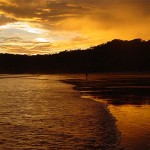 Known in spanish as “Refugio Mixto de Vida Silvestre Romelia” (RMVSR), this reserve is located just behind Playa Grande in Montezuma. Although this inscribed as a national wildlife refuge, it’s still managed by the original family who founded it, so it’s not public property and should be respected as such. So unless you’re ...
Known in spanish as “Refugio Mixto de Vida Silvestre Romelia” (RMVSR), this reserve is located just behind Playa Grande in Montezuma. Although this inscribed as a national wildlife refuge, it’s still managed by the original family who founded it, so it’s not public property and should be respected as such. So unless you’re ...
Sharks:
- White Tip Sharks in Montezuma
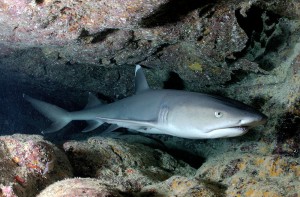 It is believed that Montezuma and the Tortuga Islands are famous for the abundance of white tipped sharks in their surrounding waters. Cabuya and Tambor Bay have also been named as a couple of places that white tip sharks inhabit almost year round. Near this area however, three main types of reef sharks are found: ...
It is believed that Montezuma and the Tortuga Islands are famous for the abundance of white tipped sharks in their surrounding waters. Cabuya and Tambor Bay have also been named as a couple of places that white tip sharks inhabit almost year round. Near this area however, three main types of reef sharks are found: ... - Whale Sharks – Occasional Visitors to Montezuma’s Waters
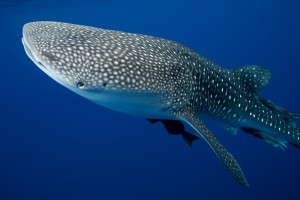 Whale sharks occasionally are found in the beautiful waters of Montezuma and other surrounding areas. Their length has actually been compared to a huge bus (40-60 feet!) And the weight of these whale sharks can be measured up to 20.6 tons. The whale shark is scientifically labeled ‘Rhincodon typus’. Due to it’s immense weight and ...
Whale sharks occasionally are found in the beautiful waters of Montezuma and other surrounding areas. Their length has actually been compared to a huge bus (40-60 feet!) And the weight of these whale sharks can be measured up to 20.6 tons. The whale shark is scientifically labeled ‘Rhincodon typus’. Due to it’s immense weight and ...
Whales:
- Orca Whales
 Orca whales live in the waters on the Pacific coast of Costa Rica, and are occasionally seen near Montezuma. Offering a wide range of activities in a sublime ambience, Montezuma has become a booming hot spot for aquatic and land sports, wildlife viewing, leisurely retreats and a lot more. Scuba diving and snorkeling are enjoyed ...
Orca whales live in the waters on the Pacific coast of Costa Rica, and are occasionally seen near Montezuma. Offering a wide range of activities in a sublime ambience, Montezuma has become a booming hot spot for aquatic and land sports, wildlife viewing, leisurely retreats and a lot more. Scuba diving and snorkeling are enjoyed ... - Pilot Whales
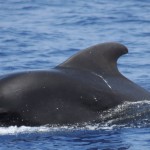 Along with countless marine creatures such as white-tip reef sharks, octopuses, fish, eels, nudibranchs and rays, there are plenty of cetaceans in the ocean bordering Montezuma, and pilot whales are one of them. Pilot whales are the second largest member of oceanic dolphins, only being surpassed by Orca whales. The pilot whale is in the ...
Along with countless marine creatures such as white-tip reef sharks, octopuses, fish, eels, nudibranchs and rays, there are plenty of cetaceans in the ocean bordering Montezuma, and pilot whales are one of them. Pilot whales are the second largest member of oceanic dolphins, only being surpassed by Orca whales. The pilot whale is in the ... - False Killer Whales
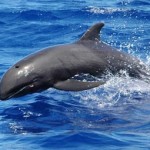 Sublime landscapes, dense rain forests, beautiful waterfalls and a large variety of wildlife define Montezuma. Scuba diving, snorkeling and surfing are its main pursuit. The coastal waters of Montezuma are profuse with fascinating marine animals; many of those are different kinds of cetaceans. The false killer whales, also known as Pseudocra Crassidens, are third largest ...
Sublime landscapes, dense rain forests, beautiful waterfalls and a large variety of wildlife define Montezuma. Scuba diving, snorkeling and surfing are its main pursuit. The coastal waters of Montezuma are profuse with fascinating marine animals; many of those are different kinds of cetaceans. The false killer whales, also known as Pseudocra Crassidens, are third largest ... - Humpback Whales
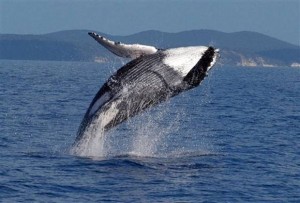 Humpback whales are frequently sighted in Montezuma, a serene sultry town in Costa Rica and other nearby regions. Humpback whale, also known as Megaptera novaeangliae, is a kind of baleen whale. Acknowledged as one of the largest cetaceans and rorquals, it reaches a height of 12 to 16 meters. It weighs an approximate of 36,000 kilograms. ...
Humpback whales are frequently sighted in Montezuma, a serene sultry town in Costa Rica and other nearby regions. Humpback whale, also known as Megaptera novaeangliae, is a kind of baleen whale. Acknowledged as one of the largest cetaceans and rorquals, it reaches a height of 12 to 16 meters. It weighs an approximate of 36,000 kilograms. ... - Whale Watching
 Many people ask me about whales… where are they, how can we see them, what time of year, etc? Costa Rica is famous for whales, and there are many species that come here seasonally, to have their babies in its protected bays and coves. Humpback Whales The most common type of whale that you may see ...
Many people ask me about whales… where are they, how can we see them, what time of year, etc? Costa Rica is famous for whales, and there are many species that come here seasonally, to have their babies in its protected bays and coves. Humpback Whales The most common type of whale that you may see ...
Great Stuff

Clandestina Restaurant
My new favorite restaurant, Clandestina is not to be missed by food lovers staying anywhere near to Montezuma. Established in March 2015, Clandestina is the new kid on the block. The Oregon/Tico collaboration is a winner among locals and travelers alike, with artisan craft beers, made onsite by Butterfly Brewing Co. and delicious, exciting […]











